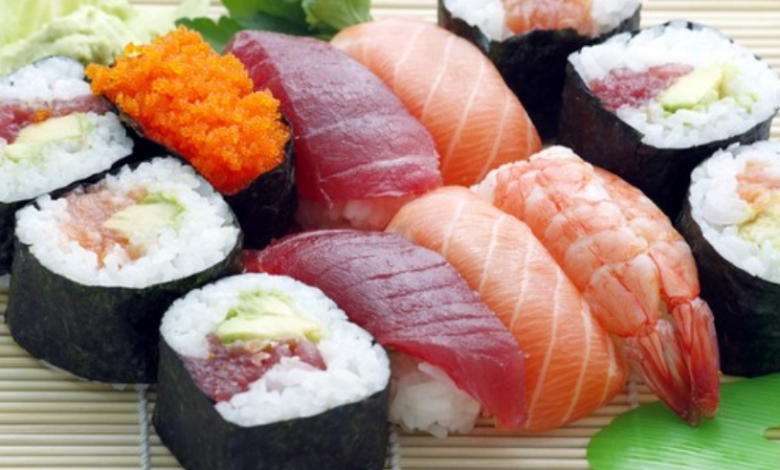Japanilainen Ruokakulttuuri: A Deep Dive into Flavors

When people think of Japan, images of sushi, steaming bowls of ramen, and elegant kaiseki dishes often come to mind. But the world of Japanilainen ruokakulttuuri — Japanese food culture — is far richer, more nuanced, and more rooted in seasonal harmony than most realize. It is a culture that reflects centuries of history, regional diversity, and an almost spiritual respect for ingredients. Whether you’re a foodie planning a culinary tour or a traveler curious about local customs, understanding Japanilainen ruokakulttuuri will unlock a deeper appreciation for the country itself.
The Core Principles of Japanese Cuisine
Japanese food is more than just sustenance — it’s an art form. Rooted in aesthetics, balance, and nature, Japanese cuisine emphasizes five key principles known as “Gomi, Goshoku, Goho”:
- Gomi – The five tastes: sweet, sour, salty, bitter, and umami.
- Goshoku – The five colors: white, black, red, green, and yellow.
- Goho – The five cooking techniques: raw, simmered, grilled, steamed, and fried.
These principles guide the preparation and presentation of every dish in Japanilainen ruokakulttuuri, ensuring meals are balanced in flavor, visually appealing, and rich in texture.
Umami: The Heart of Japanese Flavor
Discovered by Japanese scientist Kikunae Ikeda in 1908, umami is considered the fifth taste — a savory, deeply satisfying flavor found in ingredients like kombu (kelp), miso, shiitake mushrooms, and dried bonito flakes. It forms the basis of dashi, the essential broth that is used in countless dishes across Japanese cuisine.
From a bowl of miso soup to the rich broth of tonkotsu ramen, umami binds Japanese dishes together and makes them memorable.
See also: How Muslim Scholarships are Fueling Humanitarian Healthcare Efforts
Traditional Dishes You Must Know
1. Sushi and Sashimi
The global icons of Japanese cuisine, sushi (vinegared rice with raw or cooked toppings) and sashimi (thinly sliced raw fish), are emblematic of the country’s emphasis on precision and freshness. In Japan, sushi is often enjoyed at sushiya (sushi restaurants), ranging from conveyor-belt spots to Michelin-starred establishments.
2. Ramen
Far from being just a budget noodle dish, ramen is a national obsession in Japan. Each region has its own variation — miso ramen in Hokkaido, tonkotsu (pork bone) in Kyushu, and shoyu (soy sauce) in Tokyo. The depth of the broth, the chew of the noodles, and the toppings (like soft-boiled eggs, chashu pork, and bamboo shoots) make every bowl unique.
3. Tempura
Crispy and golden, tempura is a method of deep-frying seafood and vegetables in a light batter. It’s often served with a dipping sauce made from dashi, soy sauce, and grated daikon radish. Proper tempura is airy and never greasy — a testament to Japanese frying technique.
4. Kaiseki
Perhaps the highest expression of Japanilainen ruokakulttuuri, kaiseki is a multi-course dining experience that showcases seasonal ingredients and culinary artistry. Every dish in a kaiseki meal is crafted to reflect nature and evoke harmony — from the delicate arrangement of flowers to the color of the ceramic plates.
5. Donburi, Udon & Soba
Donburi are rice bowls topped with various ingredients like beef (gyudon), tempura (tendon), or raw fish (kaisendon). Udon (thick wheat noodles) and soba (buckwheat noodles) are staples, served hot or cold depending on the season.
Japanese Dining Etiquette: More Than Just Manners
When engaging with Japanilainen ruokakulttuuri, understanding local dining etiquette is essential:
- Chopsticks: Never stick chopsticks vertically into rice — it resembles a funeral offering. Don’t pass food directly from chopsticks to chopsticks either.
- Itadakimasu & Gochisousama: Before eating, say “itadakimasu” (I humbly receive), and after finishing, “gochisousama deshita” (thank you for the meal).
- Slurping is OK: In noodle dishes like ramen or udon, slurping is not only acceptable — it’s a compliment to the chef.
These rituals reinforce gratitude, mindfulness, and respect in every meal.
Seasonality: Shun and the Soul of Japanese Cooking
Japanese cuisine celebrates the shun, or the peak season of each ingredient. Chefs carefully design menus around what’s freshest in nature, resulting in dishes that change with the calendar. Spring brings bamboo shoots and cherry blossoms, summer showcases eel and cool soba, autumn highlights mushrooms and sweet potatoes, while winter is perfect for hot pots and root vegetables.
Seasonality is not just a trend but a philosophy that’s deeply ingrained in Japanilainen ruokakulttuuri.
Regional Specialties: A Tour of Japan Through Its Flavors
Each prefecture of Japan has its own local specialties, influenced by geography, climate, and history:
- Osaka – Known as “Japan’s Kitchen,” Osaka is famous for okonomiyaki (savory pancakes) and takoyaki (octopus balls).
- Kyoto – Renowned for kaiseki, tofu-based dishes, and elegant sweets like wagashi.
- Hokkaido – A haven for seafood lovers, with specialties like kani (crab), uni (sea urchin), and miso ramen.
- Fukuoka – Birthplace of tonkotsu ramen and beloved for its yatai (street food stalls).
- Hiroshima – Offers a unique version of okonomiyaki layered with noodles.
These regional dishes reflect how Japanilainen ruokakulttuuri varies from north to south, while still maintaining its core values.
Modern Japanese Cuisine: Fusion and Innovation
In recent decades, Japan has embraced global culinary trends without abandoning tradition. You’ll find Japanese-Italian pasta, French-influenced pastries, and even wagyu burgers. Izakaya (Japanese gastropubs) offer creative small plates that blend East and West, while Tokyo’s fine-dining scene is among the most decorated in the world, with more Michelin stars than Paris.
This balance of old and new keeps Japanilainen ruokakulttuuri dynamic and ever-evolving.
The Role of Food in Japanese Society
Food in Japan isn’t just nourishment — it’s social glue. From family gatherings to formal tea ceremonies, shared meals foster connection. Popular events like hanami (cherry blossom picnics), matsuri (festival food stalls), and bento lunches are all centered around food as a means of expressing care and creativity.
Even convenience stores (konbini) reflect Japan’s food excellence, offering high-quality onigiri, sandwiches, and desserts that cater to busy urban lifestyles.
Japanese Desserts: A World Beyond Mochi
While traditional sweets like mochi, dorayaki (red bean pancake), and yokan (gelatinous sweet) are still beloved, modern desserts have exploded in creativity. Think matcha parfaits, cheesecake from Hokkaido, and fluffy soufflé pancakes. Japanese desserts often lean toward subtle sweetness, highlighting texture and seasonal fruit.
Vegetarian & Vegan Food in Japan
While traditional Japanese cuisine includes a lot of fish and dashi, shojin ryori — the Buddhist vegetarian cuisine — offers plant-based dishes made without garlic, onions, or meat. It’s common in temple cuisine and increasingly popular in cities with vegetarian travelers.
Tokyo, Kyoto, and Osaka now feature a growing number of vegan restaurants offering alternatives like plant-based ramen, tofu steak, and vegan sushi.
How to Experience Japanilainen Ruokakulttuuri as a Visitor
To fully immerse yourself in Japanese food culture:
- Visit a Local Market – Explore places like Nishiki Market (Kyoto) or Tsukiji Outer Market (Tokyo).
- Take a Cooking Class – Learn to make sushi, tempura, or bento from local chefs.
- Dine at Different Establishments – Try everything from street food stalls to kaiseki restaurants.
- Stay in a Ryokan – Traditional inns serve seasonal dinners and elaborate breakfasts.
- Participate in a Tea Ceremony – Experience the mindfulness that defines Japanese hospitality.
These experiences go beyond eating — they reveal the philosophy behind Japanilainen ruokakulttuuri.
Final Thoughts: A Culture Rooted in Respect
Japanilainen ruokakulttuuri is a tapestry of tradition, simplicity, and innovation. It reflects deep respect for nature, the seasons, and the people who prepare and share food. Whether it’s a humble bowl of miso soup or an elaborate kaiseki meal, each bite tells a story of heritage and harmony.
If you’re planning a trip to Japan, diving into its food scene is one of the most rewarding ways to connect with the country. And if you’re exploring Japanese cuisine from afar, every dish offers a chance to taste its timeless spirit.




